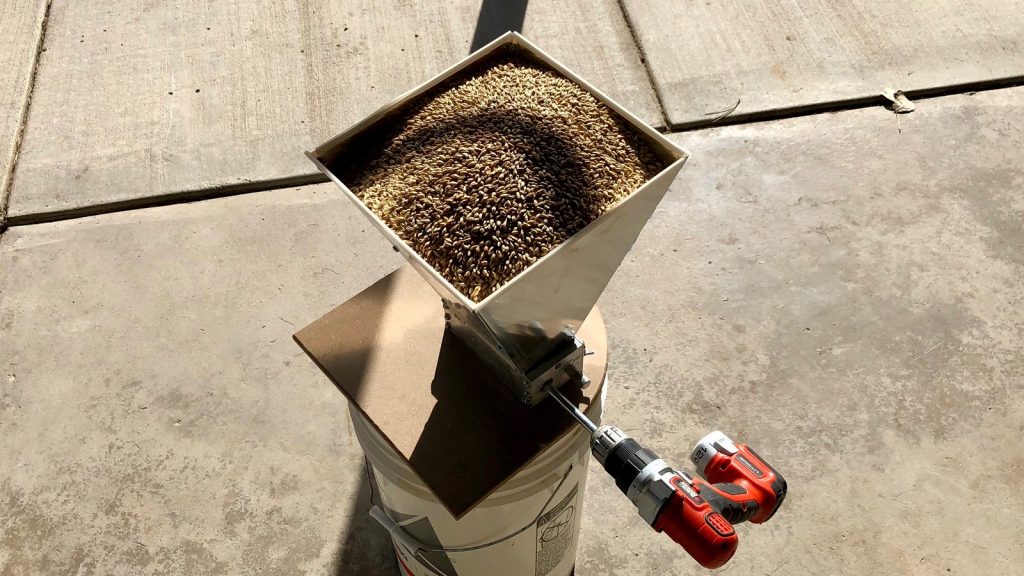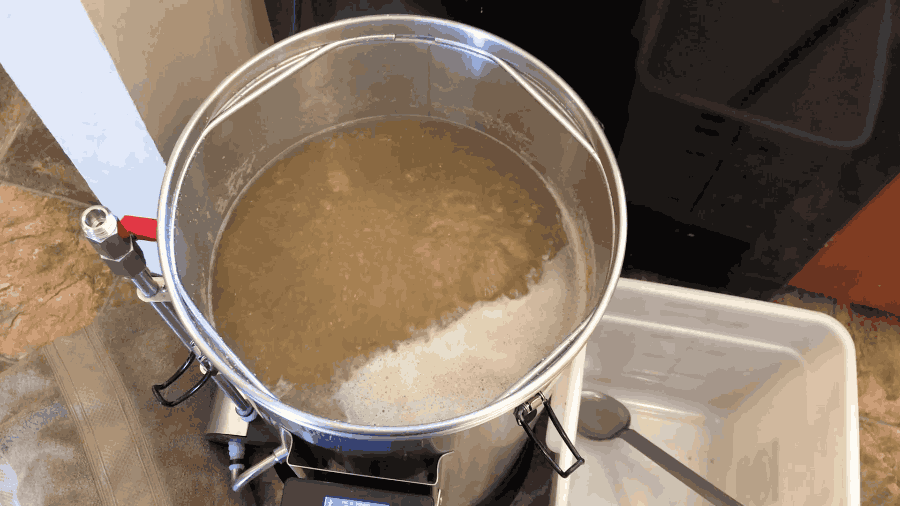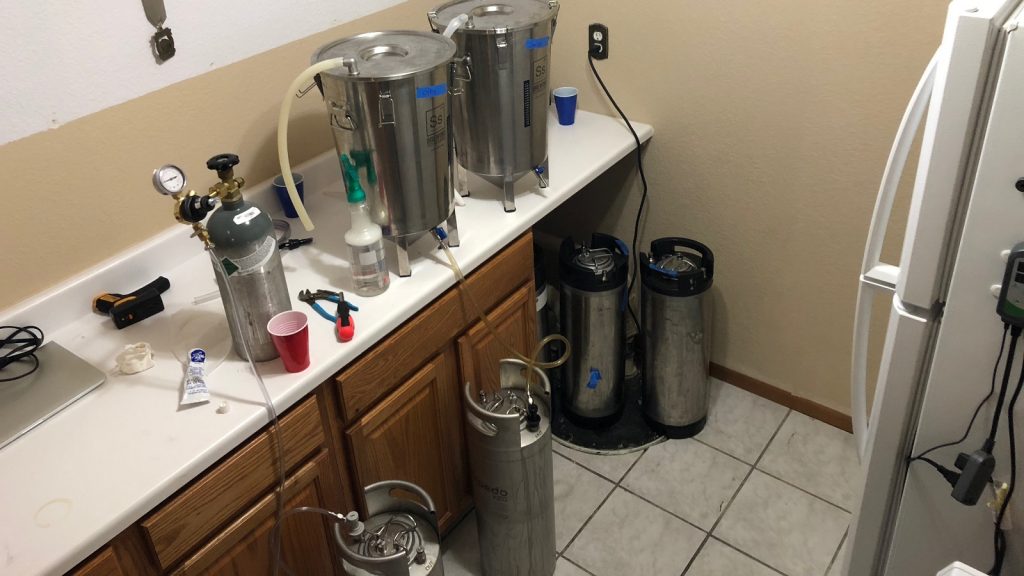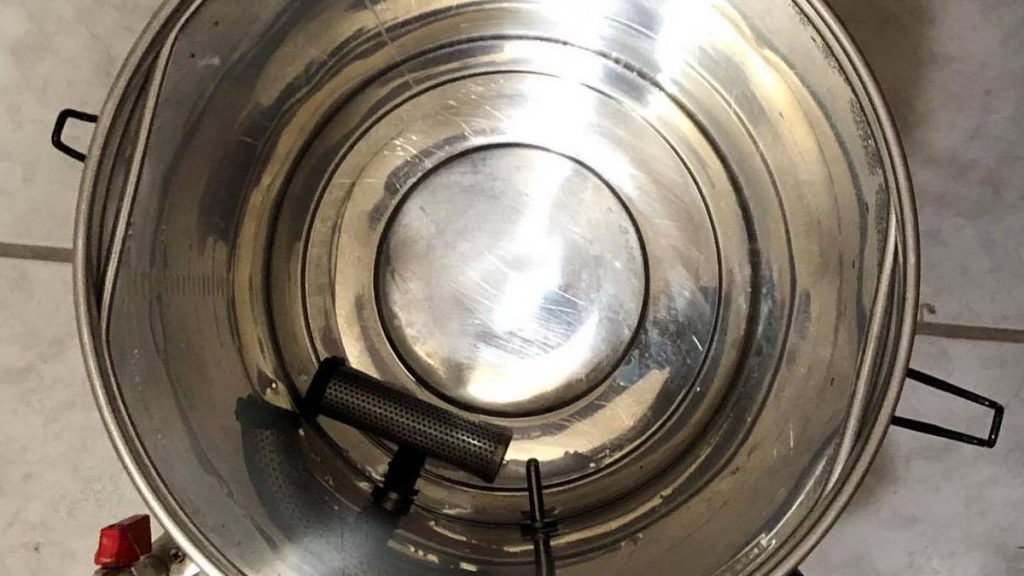 A technology writer for outfits such as ZDNet and CNET, contributor Jason Cipriani’s intense curiosity and analytical way of thinking fit right in with the Brülosophy ethos. After officially joining the crew in October of 2017, Jason’s primary focus was The Hop Chronicles, though he has also brewed for our Short & Shoddy series and his focus recently shifted to brewing primarily exBEERiment beers. Jason lives in Pueblo, CO where he serves as secretary of the Steel City Brewers and also occasionally attends Brew Brothers of Pikes Peak Homebrew Club meetings to collect data.
A technology writer for outfits such as ZDNet and CNET, contributor Jason Cipriani’s intense curiosity and analytical way of thinking fit right in with the Brülosophy ethos. After officially joining the crew in October of 2017, Jason’s primary focus was The Hop Chronicles, though he has also brewed for our Short & Shoddy series and his focus recently shifted to brewing primarily exBEERiment beers. Jason lives in Pueblo, CO where he serves as secretary of the Steel City Brewers and also occasionally attends Brew Brothers of Pikes Peak Homebrew Club meetings to collect data.
| ABOUT JASON |
How did you get into brewing?
On the morning of Christmas 2013, I awoke to find several boxes of empty beer bottles under the tree, along with some plastic buckets I had no clue what to do with. The idea of brewing beer at home had never crossed my mind, and I admittedly questioned whether or not it was even legal.
I was bit by the craft beer bug a couple years prior to this and my wife thought occasionally making my own beer would be a fun hobby. Boy, was she right!
A few weeks later I made my first batch.
What was your first batch and how did it turn out?
The equipment kit I received for Christmas included an Amber Ale extract recipe kit. I remember not taking many (any?) notes, thinking the idea of sanitation was a bit crazy, and deciding on my own that temperature ranges for steeping grains and proper yeast pitch rates were just nonsense.
With my lackadaisical approach, it’s fair to say there was a lot going on with this initial beer– it tasted nothing like an Amber Ale. I don’t remember much about it, to be honest, other than I forced myself to drink all 50 bottles of it; I had made it, after all.
How did you get involved with Brülosophy?
I write for a living and have this habit of taking hobbies so serious they sort of stop being hobbies. Whereas many homebrewers dream of opening a brewery, I was interested in contributing to the community by doing what I know best, which led me to seek opinions on blog ideas via a Reddit post. It was in this thread where I first started communicating with Marshall. I was familiar with Brülosophy at the time and loved what they were up to, so the opportunity to discuss becoming a contributor to an established website was exciting. We stayed in fairly regular contact for the following few months, I sent some beers in that apparently passed the test, then I was eventually asked to join this rad team.
What xBmt has surprised you the most?
Oh man, I don’t know. I think if I have to pick one, it would be mash temperature. I used to fret if I missed my mash temp by 1-2°F and would spend a lot of energy on making sure it hit the “right” temp. The xBmts on this variable have shown me that mash temperature doesn’t require such precision, meaning I don’t need to stress so much if I’m a little off my mark.
Have the xBmts influenced your current brewing perspectives?
All of them? Seriously, I’ve realized there are things like waster chemistry that I should probably pay more attention to, while other aspects like fermentation and mash temperatures aren’t as definite as I once believed. I still mind most variables to keep the xBmts as controlled as possible, but when brewing for pleasure, I worry far less than I used to about quite a few parts of the process.
Oh, and fast lager — it’s not fake news.
What are your 3 favorite styles of beer?
American IPA
I’m all for the hazy trend of IPA and have a fridge full of them to prove it, but there’s something about a traditional West Coast IPA that I just can’t get enough of. A nice malty backbone with plenty of hops and an IBU north of 80… I’m a happy camper. Make it Double IPA and I’ll like it even more!
Saison
At one time, I was obsessed with Saison. I couldn’t get enough of the malty yet spicy flavor profile. I once made a Saison with a heavy dose of rye malt and it was by far one of my favorite homebrews to date.
Imperial Stout
Does this one even need an explanation? A big beer with notes of chocolate and vanilla along with a warming level of alcohol? Count me in.
What are your favorite ingredients?
Malt: Maris Otter
I like to use Maris Otter in place of Pale 2-Row whenever possible due to its slightly sweet, biscuit-like characteristics.
Hops: Simcoe
Even when I’ve experienced “catty” character in a Simcoe hopped beer, I haven’t hated it. Simcoe is close enough to Citra, but I feel it adds a complexity to beers instead of straight up citrus that I’m rather fond of.
Yeast: Imperial Yeast L28 Urkel
Once I started using Imperial Yeast L28 Urkel, a traditional lager strain, to ferment hoppy Pale Ales, I was sold. It imparts a clean crispness, even when fermented at ale temperatures, that I can’t get enough of.
What’s your desert island beer?
I’m going to have to go with Melvin Brewing’s 2×4 DIPA. It’s my fall back beer when I can’t figure out what I feel like drinking, and even through it’s 9.9% ABV and 100+ IBU, 2×4 is extremely crushable and smooth.
What music do you listen to while brewing?
Normally, I don’t have any music on when I’m brewing, partially because most of my brewing is done indoors. Instead, I’m usually browsing Twitter or Reddit while waiting for the next step. On the rare occasion I am outside, I’ll crank up the Sonos with a mix of NF, G-Eazy, Logic, and Kendrick Lamar.
What else do you enjoy doing besides brewing?
Baseball consumes my life for part of the year, which isn’t a bad thing. When I’m not brewing, I’m usually hanging with my wife and 3 kids, playing videos games, and when the opportunity presents itself, fishing. Actually, fishing is something I need to do more of.
If you could go back, what brewing advice would you give yourself?
BIAB is the way to go! If I could go back, I’d pass on the big ol’ overly complicated 3 vessel system that I spent at months designing and building out. It was as expensive as it was complex, and at the end of the day, way too much work to manage for no real payoff.
| BREWING GEAR & PROCESS |
I recently switched from a complicated and cumbersome 3 vessel brewing setup to the beautiful simplicity of the Grainfather All Grain Brewing System with Connect Controller. Having run many batches through the Grainfather, I continue to be impressed with its paring of techy advancements and overall ease of use.
Pre-Brew Preparation
I typically spend a couple hours researching recipes or new techniques I want to try before committing to a brew day before entering my recipe into BeerSmith. Once the recipe is set, I import the XML file from BeerSmith to the Grainfather brewing site, double-checking to ensure no errors once loaded.
While I sometimes pitch yeast direct or make vitality startes day of, I often propagate yeast in standard starters a few days before brewing to ensure proper cell counts.
I use RO water for most of the beers I make, and because the filtration process takes so long, I usually collect my brewing water days ahead of time.
I use the Bru’n Water Spreadsheet to determine the minerals and acid required to achieve my desired profile, then weigh them out with a precision scale and add them to the water just prior to brewing.
As the water is warming up, I move on to weighing out and milling the grains.
Brewing
The Grainfather being an all-in-one system means the brewing process is largely self-contained and incredibly uncomplicated. Once the Connect controller indicates my programmed strike temperature has been reached, I add the grains to the mash basket and give it a good stir.
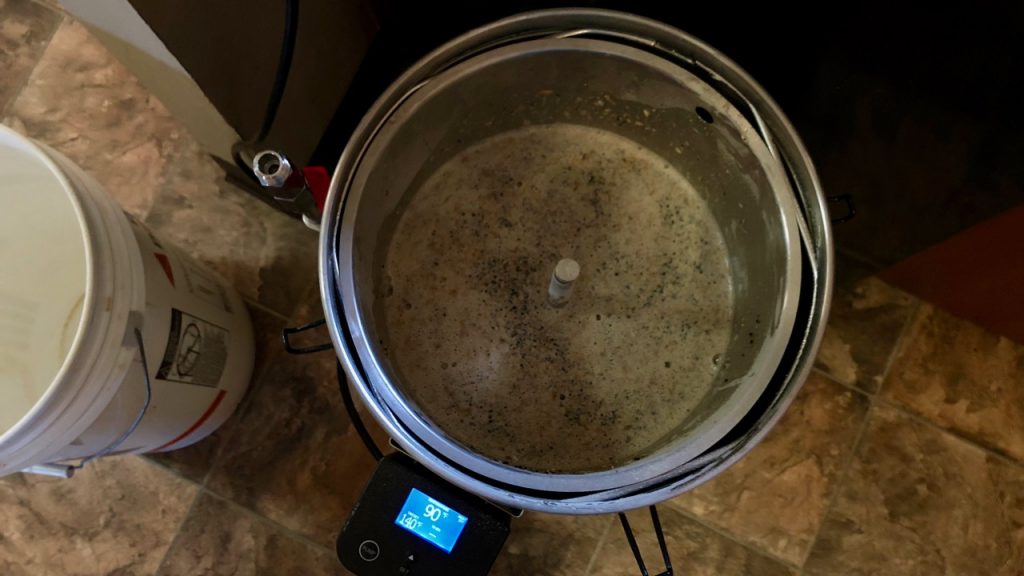
With the recirculation pump engaged, I take a temperature reading just to make sure it matches what I set in the Connect controller (it always does).

About 15 minutes into the the mash, I steal a sample to measure the pH.

During the mash rest, I weigh my hop additions using a precision scale.
I then use a HotRod heat stick to heat my sparge water in a 10 gallon water cooler.
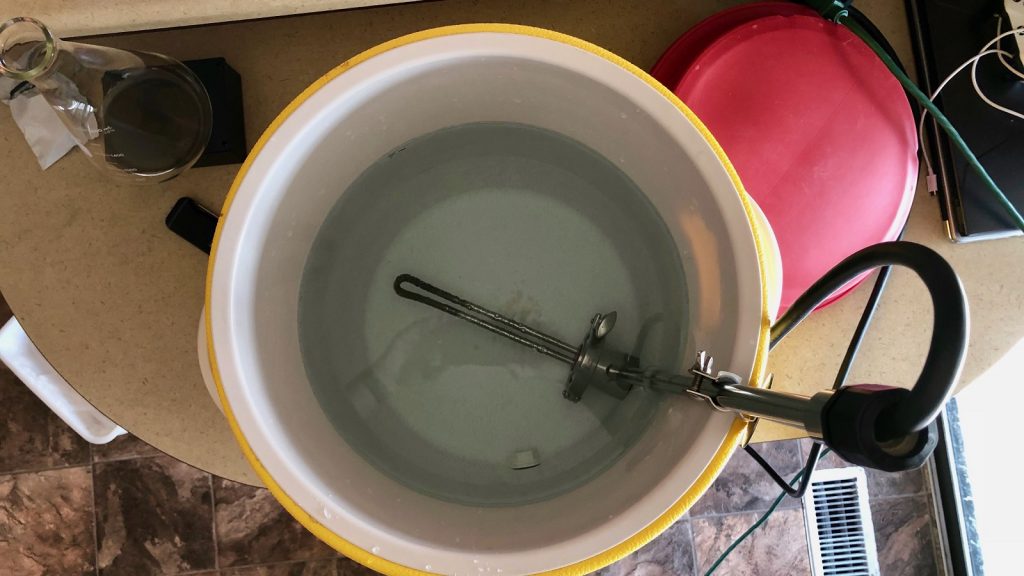
Once the mash is complete, I remove the mash basket and sparge with the heated water while the wort below begins heating.
Once the wort achieves a boil, which happens to occur at 203°F/95°C here in Pueblo, CO, I set my timer and start making any kettle hop additions.
With 10 minutes left in the boil, I pump hot wort through the Grainfather counterflow chiller to sanitize it, then once the boil has finished, turn my cold water on for quick chilling.
The cool wort is transferred directly into sanitized Ss Brewtech Brew Buckets.
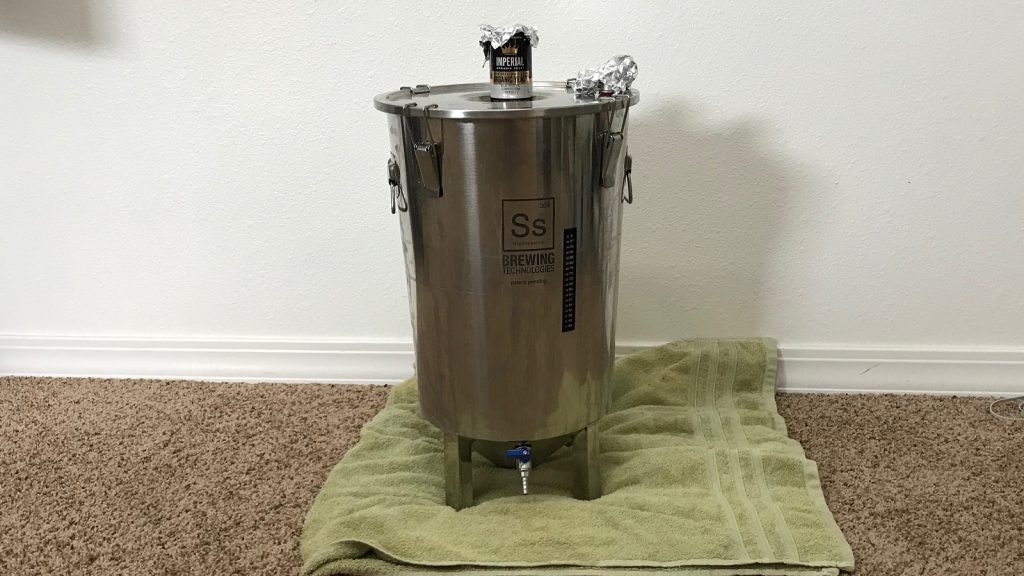
I place the Brew Bucket/s in a dedicated refrigerator that serves as a fermentation chamber before pitching the yeast.
Packaging
I keg almost all of my beer, occasionally bottling some for competition. After sanitizing my tubing and kegs, I simply transfer the beer from the valve on the Brew Bucket into the kegs.
The filled kegs are placed in my cool keezer where I burst carbonate by hitting them with 55 psi of CO2 for about 20 hours or so before reducing the gas to serving pressure. I then let the beers cold condition for a few days before consuming and serving to guests or participants.
Serving
I serve my beer from a keezer that snugly fits 4 ball lock corny kegs.
My keezer is currently outfitted with 3 Perlick 650SS flow control faucets.
Cleaning & Sanitation
As soon as I’ve transferred all the wort out of my kettle, I rinse it out and fill it up with PBW cleaning solution, which gets heated to about 160°F/71°C and recirculates through the pump and CFC for 15 minutes. Once that’s done, I empty the Grainfather kettle and give it a good scrub before recirculating clean water to rinse off any residual PBW. Finally, I give the unit a light spray of Star San solution and let it air dry.
I clean my fermentation vessels with a PBW solution shortly after they’ve been emptied then let them air dry, sanitizing them with Star San prior to every use. I often let empty kegs sit in my keezer until I have a few to clean up, then I use my Mark II Keg washer for a thorough cleaning.
Other Stuff
For hop storage, I use an inexpensive Seal-A-Meal vacuum sealer to pull out as much oxygen as possible then keep the hops in my freezer. I keep bulk grains in the popular 60 lbs Vittles Vault used by many brewers. Other than that, it’s just a bunch of other knick-knacks I’ve picked up over the last few years of brewing.
Contact Jason via email at jason@beerconnoisseur.local and feel free to leave any questions in the comments section below!
New Brülosophy Merch Available Now!
Follow Brülosophy on:
FACEBOOK | TWITTER | INSTAGRAM
If you enjoy this stuff and feel compelled to support Brulosophy.com, please check out the Support Us page for details on how you can very easily do so. Thanks!





